Our walk around Sandiacre is nearing completion although
there is still another part to come after this one. We concluded
Part 8 on Victoria Road and a left turn from there leads us into
Stevens Road and then to Derby Road.

As we turn from Stevens Road, on the left in the image above,
into the busy Derby Road, we can almost see the Market Place
which marks the start and end of the walk but before we reach
it, there are still some interesting features to be seen along
the road.
|
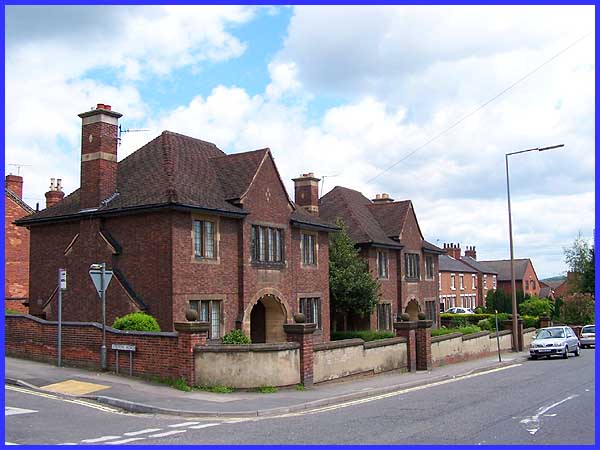
 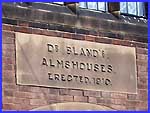 The first point of interest is actually
on the corner of the two roads where two blocks of almshouses
were built in 1910. The building of the almshouse was financed
with money left by a local practitioner Dr Bland and this fact
is commemorated in the stonework on the houses (left). The stone
surrounds to the windows are also worthy of note as are, and
I quote, "the hipped tiled rooves that strongly project
over the walls" (right). The first point of interest is actually
on the corner of the two roads where two blocks of almshouses
were built in 1910. The building of the almshouse was financed
with money left by a local practitioner Dr Bland and this fact
is commemorated in the stonework on the houses (left). The stone
surrounds to the windows are also worthy of note as are, and
I quote, "the hipped tiled rooves that strongly project
over the walls" (right).
|
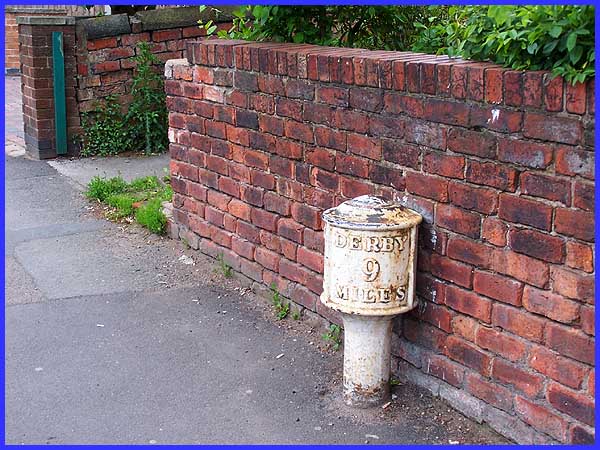
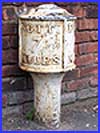 A little further
down the road is a 'bobbin' milepost which was cast by a Derby
company, Harrisons. One side is marked 'Derby 9 miles' and the
other 'Nottingham 7 miles'. Although nearer to Nottingham, Sandiacre
of course sits within Derbyshire and it is interesting to learn
that during the Second World War, Nottinghamshire mileposts were
removed to confuse an invading enemy but the Derbyshire signs
were not. In hindsight it does seem a little odd to comprehend
the thinking behind these differing viewpoints. Surely if an
army had made its way across the country to here - the nearest
coastline being about 90 miles away - and even if it had dropped
in by parachute you would have thought that it would have a pretty
good idea about where they were. I'm with Derbyshire on this
one. A little further
down the road is a 'bobbin' milepost which was cast by a Derby
company, Harrisons. One side is marked 'Derby 9 miles' and the
other 'Nottingham 7 miles'. Although nearer to Nottingham, Sandiacre
of course sits within Derbyshire and it is interesting to learn
that during the Second World War, Nottinghamshire mileposts were
removed to confuse an invading enemy but the Derbyshire signs
were not. In hindsight it does seem a little odd to comprehend
the thinking behind these differing viewpoints. Surely if an
army had made its way across the country to here - the nearest
coastline being about 90 miles away - and even if it had dropped
in by parachute you would have thought that it would have a pretty
good idea about where they were. I'm with Derbyshire on this
one.
|
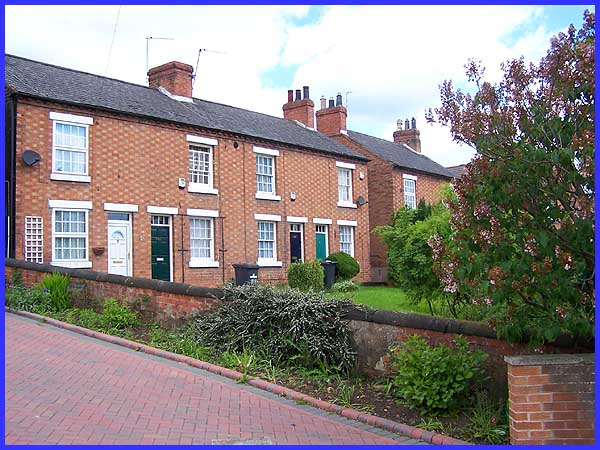
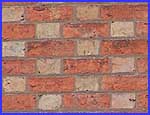 Another fine example
of Derbyshire craftsmanship can be seen in these terraced houses
on Derby Road. The distinctive red and yellow pattern of the
brickwork (right) probably dates from the first half of the nineteenth
century and the facing bricks were made in the local Sandiacre
Brickworks. This delightful example of the art was preserved
for posterity when plans for the demolition of the properties
were thwarted in the early 1970s. The site of the brickworks
was off Bostocks Lane and is now long gone probably lying somewhere
beneath Junction 25 of the M1 where it meets the A52 in the south
west corner of Sandiacre. Another fine example
of Derbyshire craftsmanship can be seen in these terraced houses
on Derby Road. The distinctive red and yellow pattern of the
brickwork (right) probably dates from the first half of the nineteenth
century and the facing bricks were made in the local Sandiacre
Brickworks. This delightful example of the art was preserved
for posterity when plans for the demolition of the properties
were thwarted in the early 1970s. The site of the brickworks
was off Bostocks Lane and is now long gone probably lying somewhere
beneath Junction 25 of the M1 where it meets the A52 in the south
west corner of Sandiacre.
|
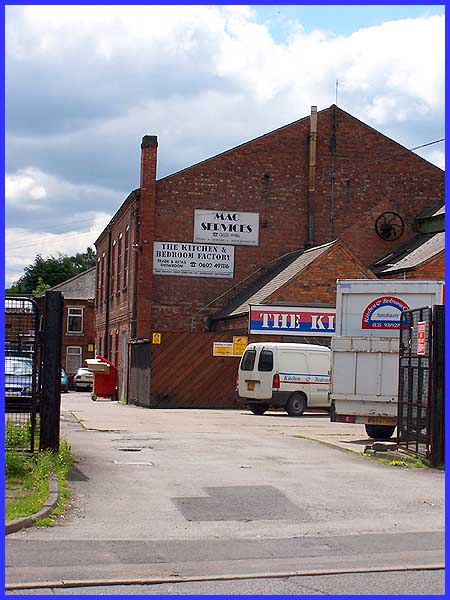
Across the road from the terraced houses are a number of factories
that are today engaged in various activities but when they were
originally built circa 1900, they were used in the lace manufacturing
industry.
|
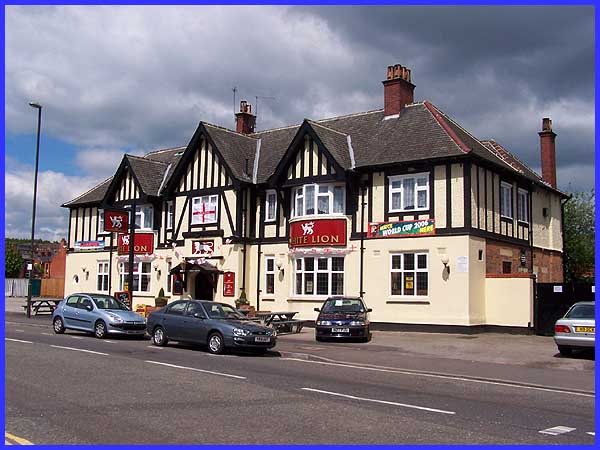
We are now but a few steps away from the Market Place which is
overlooked by the Red Lion public house. Before we reach it though
we have to pass the White Lion pub. In a bygone age both pubs
were once places where horses were changed but they have both
undergone significant changes since. Like many establishments
in England at the moment (June 2006) in the lead up to the World
Cup in Germany, the White Lion is adorned with national flags
and banners advertising the soccer tournament and tempting supporters
to cheer on the team from within their premises. Only time will
tell whether the black cloud over the pub is an omen. (It
was!).
|

